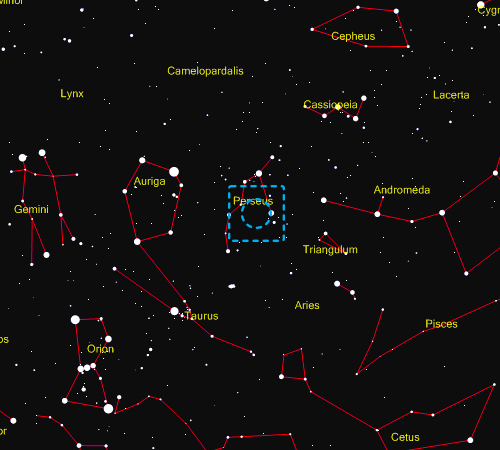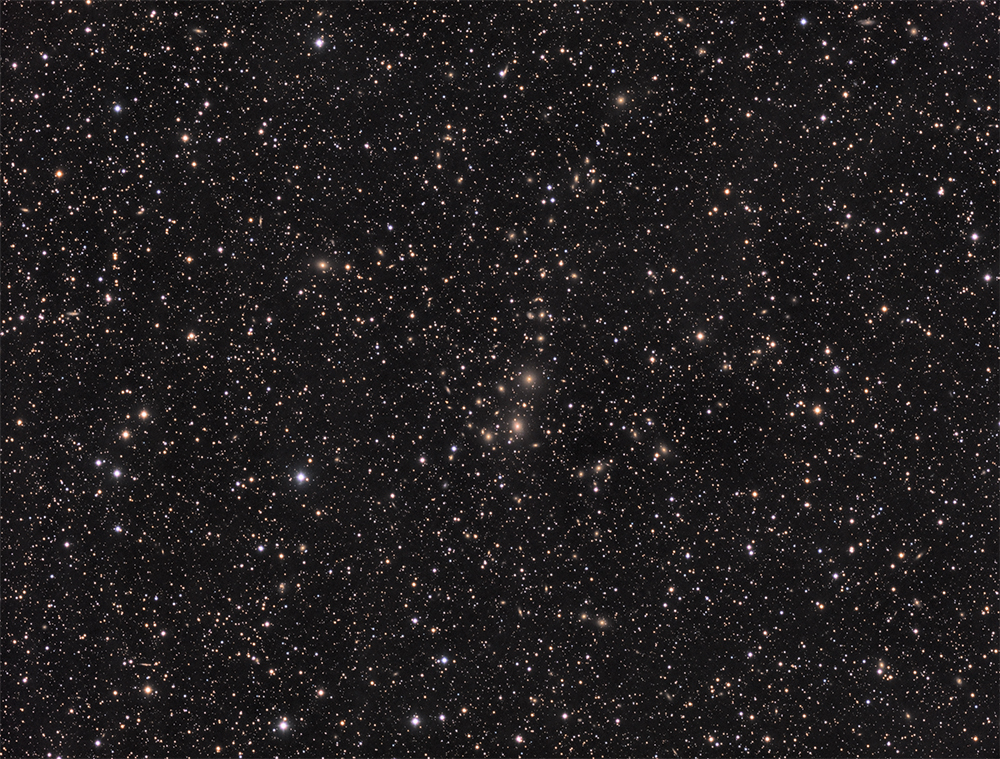NAME:
CATALOGUE:
OBJECT TYPE:
CONSTELLATION:
DISTANCE:
APPARENT MAGNITUDE:
APPARENT SIZE:
DIAMETER:
DISCOVERY:
BEST VIEWED IN:
RIGHT ASCENSION:
DECLINATION:
TELESCOPE:
DATA GATHERED:
EXPOSURES:
TOTAL TIME: |
|
The Perseus Cluster
Abell 426
Galaxy Cluster
Perseus
240 million light years
+12 (NGC 1275)
860 arcminutes
60 million light years
Perseus A, 1786, William Herschel
November
03h 21m 02s
+41º 34’ 37”
Skywatcher Esprit 100ED
7 nights, October & November 2018
L = 16 x 1200s
RGB = 18 x 600s each
14 hours 20 minutes |


